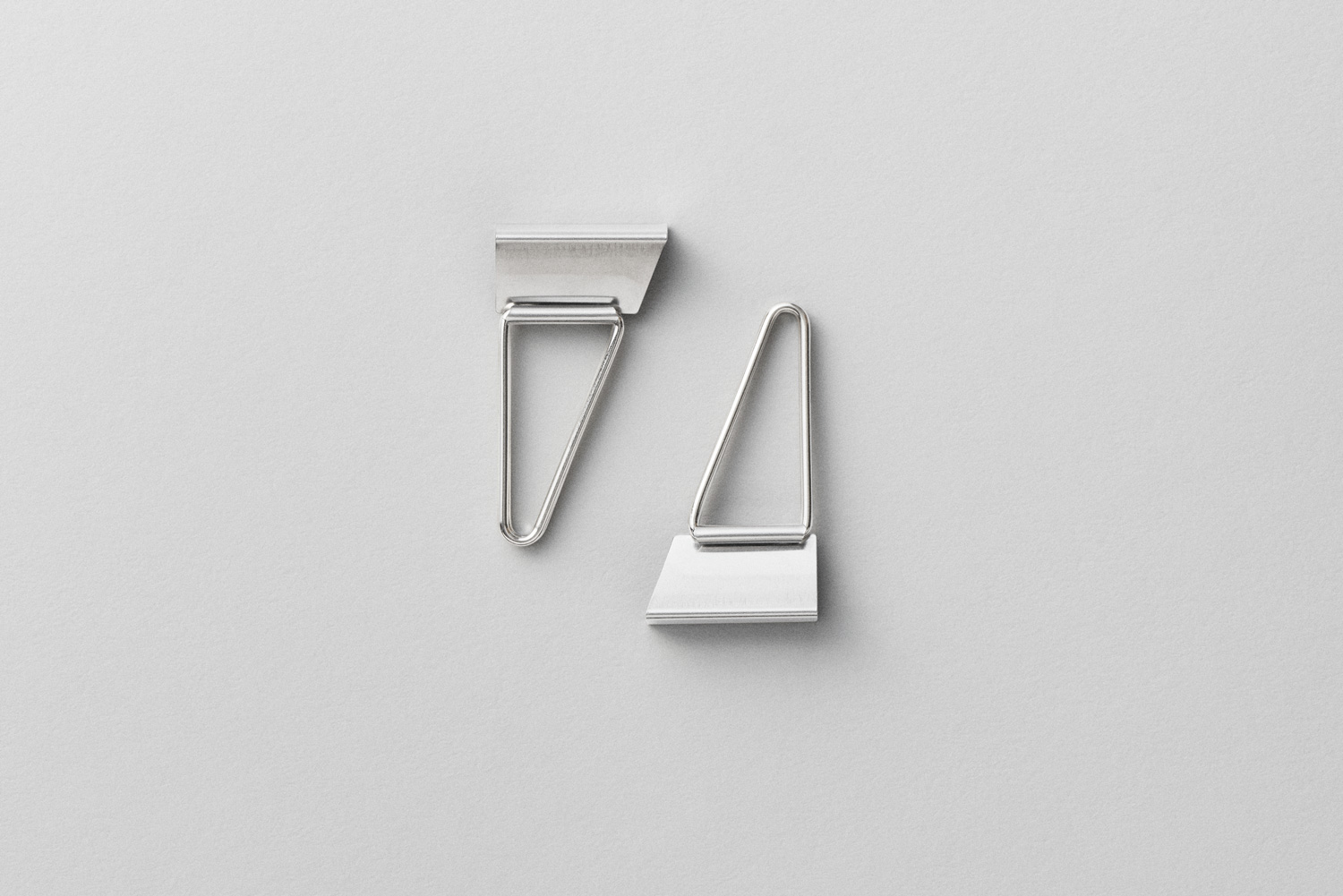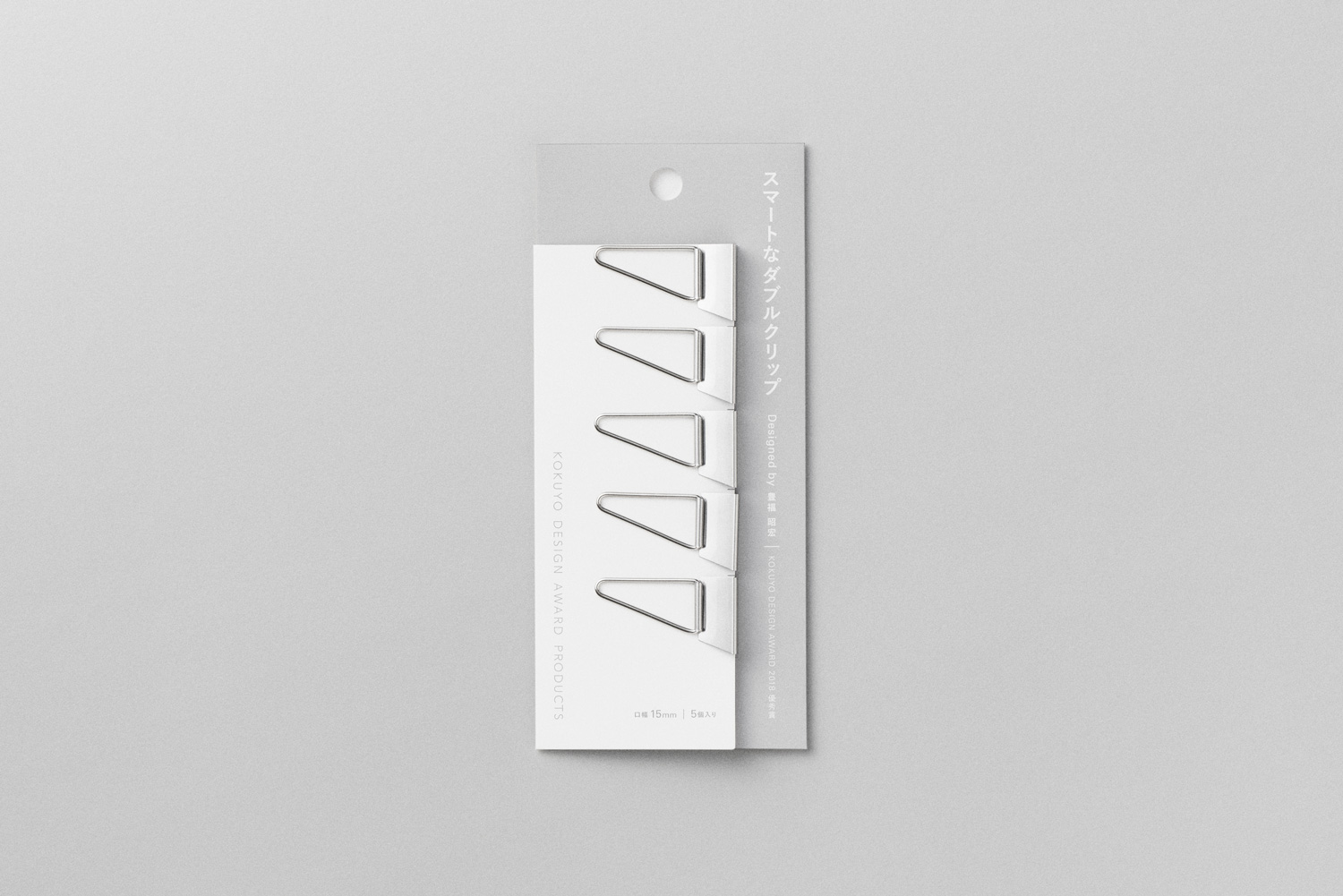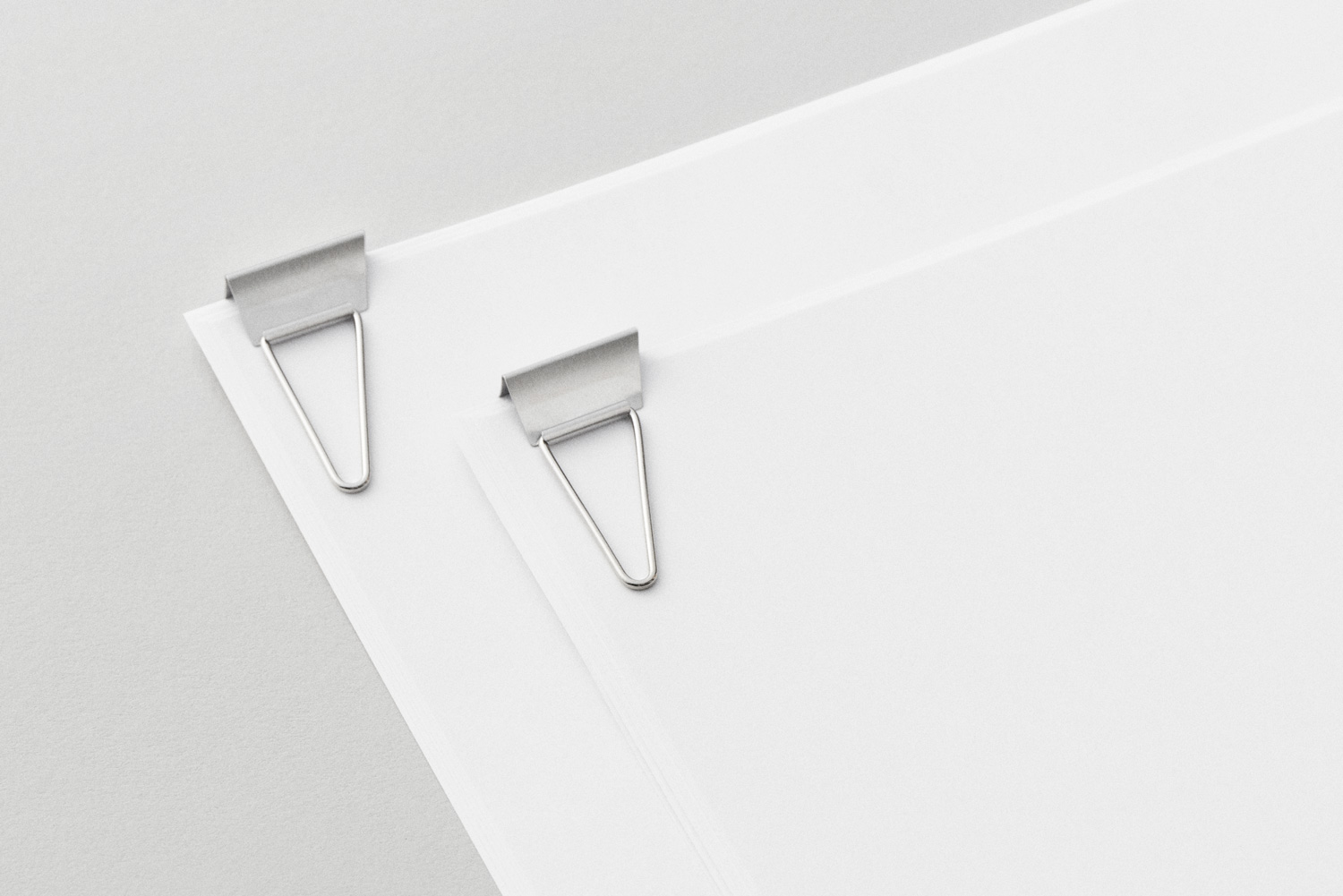FROM CONTEST TO MARKET
Smart Double Clip
<2018 Merit Award>
Binder clips can hold together stacks of paper with a snap, and they very much come in handy when it comes to preparing documents. However, they also get in the way when you turn the page. The “Smart Double Clip” is made in the same triangular shape that is formed at the corner of papers when you turn through them. This smart shape helps you turn pages neatly and smoothly. This new clip is made from the perspective of end users, not consumers.
Introduction video about products :
https://youtu.be/rB0tShVKomk(YouTube)
*Only available for purchase in Japan.
The “Smart Double Clip” was one of the products that received an award for excellence at the KOKUYO DESIGN AWARD 2018. When its creator, Akihiro Toyofuku, entered the competition, he was in his sixth year working for an interior design company. “I have entered the KOKUYO DESIGN AWARD competition since I was a student majoring in product design, and it was my sixth time entering,” he says. For the 2018 theme, BEYOND BOUNDARIES, we took the binder clip, which was invented in the United States more than 110 years ago, and reimagined its shape from the perspective of a new user: end users that want to page through documents while a binder clip holds them together.
“First, you have the consumers who just want to clip stacks of paper together, and then you have the end users who want to look through them. I felt like binder clips were made more for consumers than end users, so I started from there.”
The product model that Akihiro made for the final judging was basically a finished product and received high praise from the judges with comments like “This feels like a KOKUYO product,” “We might just have another Kadokeshi here,” and “Its use is clear, and I'm sure it will be a hit.” Immediately after receiving the award, it was decided to proceed with making it into a product.
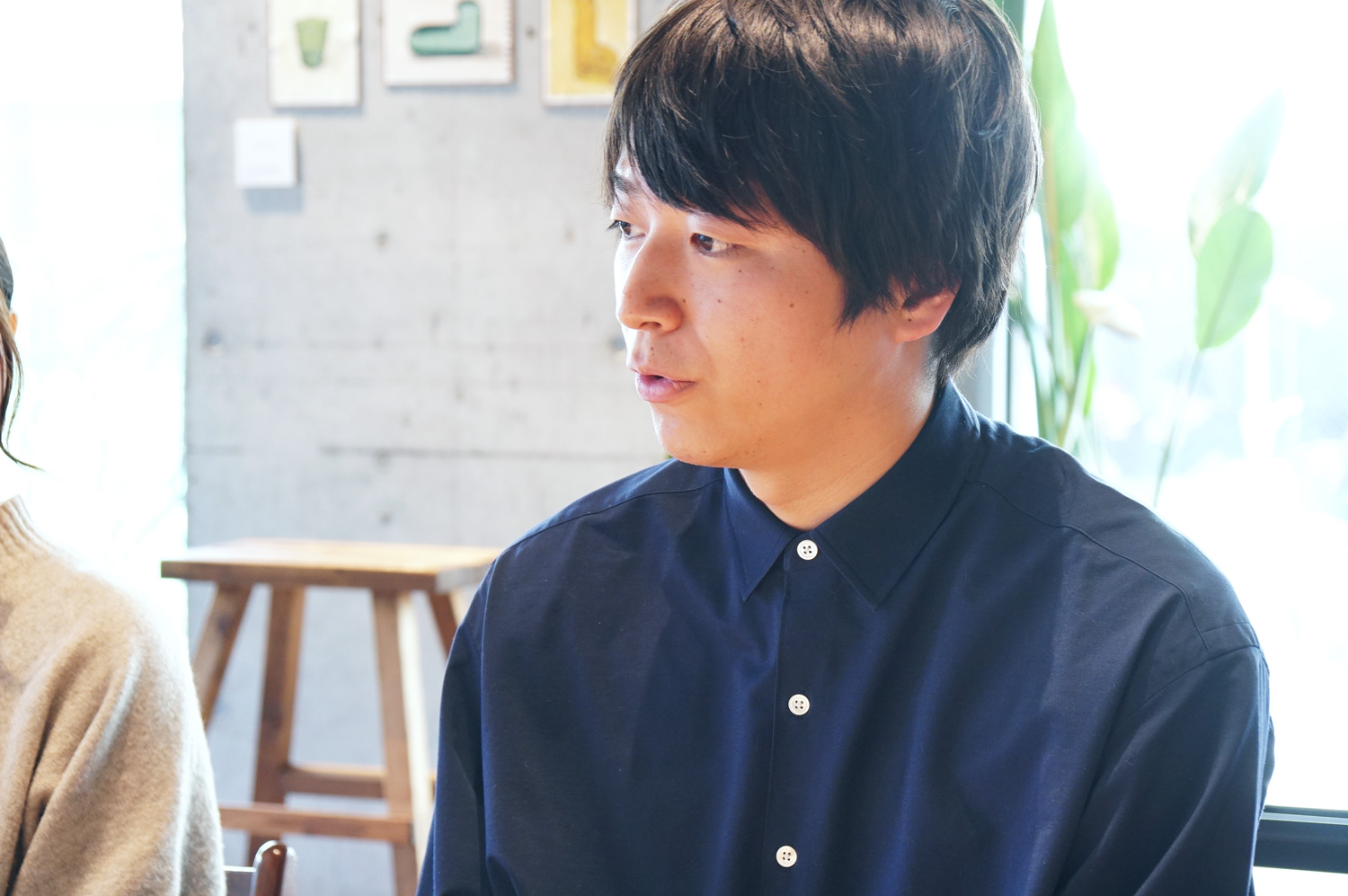
Akihiro Toyofuku, creator of the Smart Double Clip. He is currently still working in interior design.
One Challenge After Another
Everyone thought it would be easy to make the Smart Double Clip into a product since KOKUYO was manufacturing and selling binder clips. It is an extremely simple product that consists of only two parts: spring steel (the black part that holds the paper) and stiff wire (used as handles and allow the clip to be opened). However, when we started with the project of making it into a product, we kept running into challenges.
The first major challenge we faced was mass production. Aya Homma of KOKUYO, who was in charge of making the Smart Double Clip into a product, recalls, “I was very particular about how things should be done because I really wanted to make the unique shape that Akihiro came up with into an actual product. I especially wanted to make sure that the diagonal lines of the stiff wire were perfect, following the concept of allowing end users to turn pages without hassles.” A part of making the Smart Double Clip into a product involves trying to mass produce the product model Akihiro made for the competition, where various conditions have to be met like machine performance and the cost of human labor.
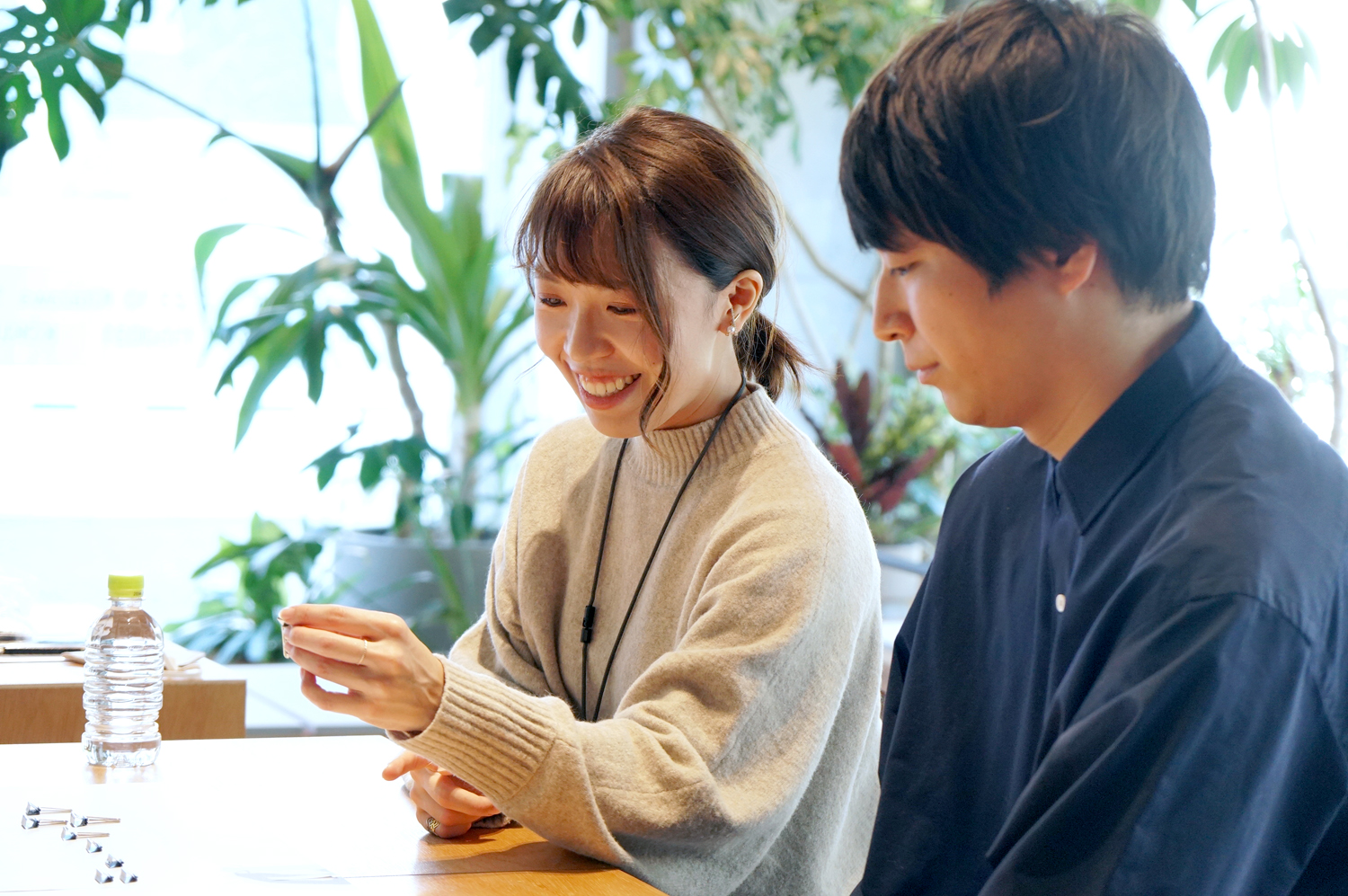
KOKUYO's Aya Homma (left), who was in charge of making the Smart Double Clip into a product. At the time, she was in charge of metal products such as staplers and cutters.
While the Smart Double Clip may look similar to conventional binder clips, it has a different structure and is made differently, making it impossible to mass produce them in the existing factories that mass produce binder clips. According to Aya, “Ordinary binder clips are usually pieces of solid metal (spring steel) bent into the shape of a triangle, with one point open.
Through the two ends of the open point, two stiff wires are looped through from the inside, but with the Smart Double Clip, the wire must be inserted from the outside due to its structure, which made it incompatible with existing automatic machines.” She says that they stopped trying to automate this part of the production process and that it took time to find a factory that could do it manually.
Another challenge is quality. At KOKUYO, all products pass strict quality tests before they are put on the market. Similarly, the Smart Double Clip underwent quality testing at the prototype stage, and a problem arose where the clip would stay open after several hours of holding a large number of sheets at a time, making it impossible to bind a small number of sheets. “We almost wanted to change the factory where it was being made because it couldn't be made into a product with such problems,” Aya says. However, when the factory changes, the equipment changes, which could cause more problems, putting us into a negative spiral. This all happened over a long period of time.
The Third Reality We Had To Face
Akihiro had no choice but to watch how Aya and her team were scrambling to find a factory from a remote location due to COVID-19. “There were times I listened to Aya talking about how things were going, and I got worried that we might not be able to make my Smart Double Clip into a product,” he says.
The ultimate challenge was surface treatment. “We managed to find a factory that could insert the stiff wires by hand, but that factory could not do the surface treatment,” says Aya. When the clear coating was applied to the surface of the spring steel, it came out uneven, which did not meet the quality that KOKUYO looks for in their products. Aya looked for a factory that could handle this process and contacted eight companies in Vietnam, where spring steel and stiff wires are often manufactured. However, even when we tried to make prototypes, all of the factories had something good and something bad about them, so we had to give up on that idea. We gave up on outsourcing to Vietnam and shifted our focus back to getting it done domestically. We were sorely disappointed, however, as the spring steel was getting damaged by the load caused by the surface treatment. Akihiro says, “It happened just when I was sent some product samples and felt sure that we could make the Smart Double Clip here in Japan. I thought that this time it was all over.”
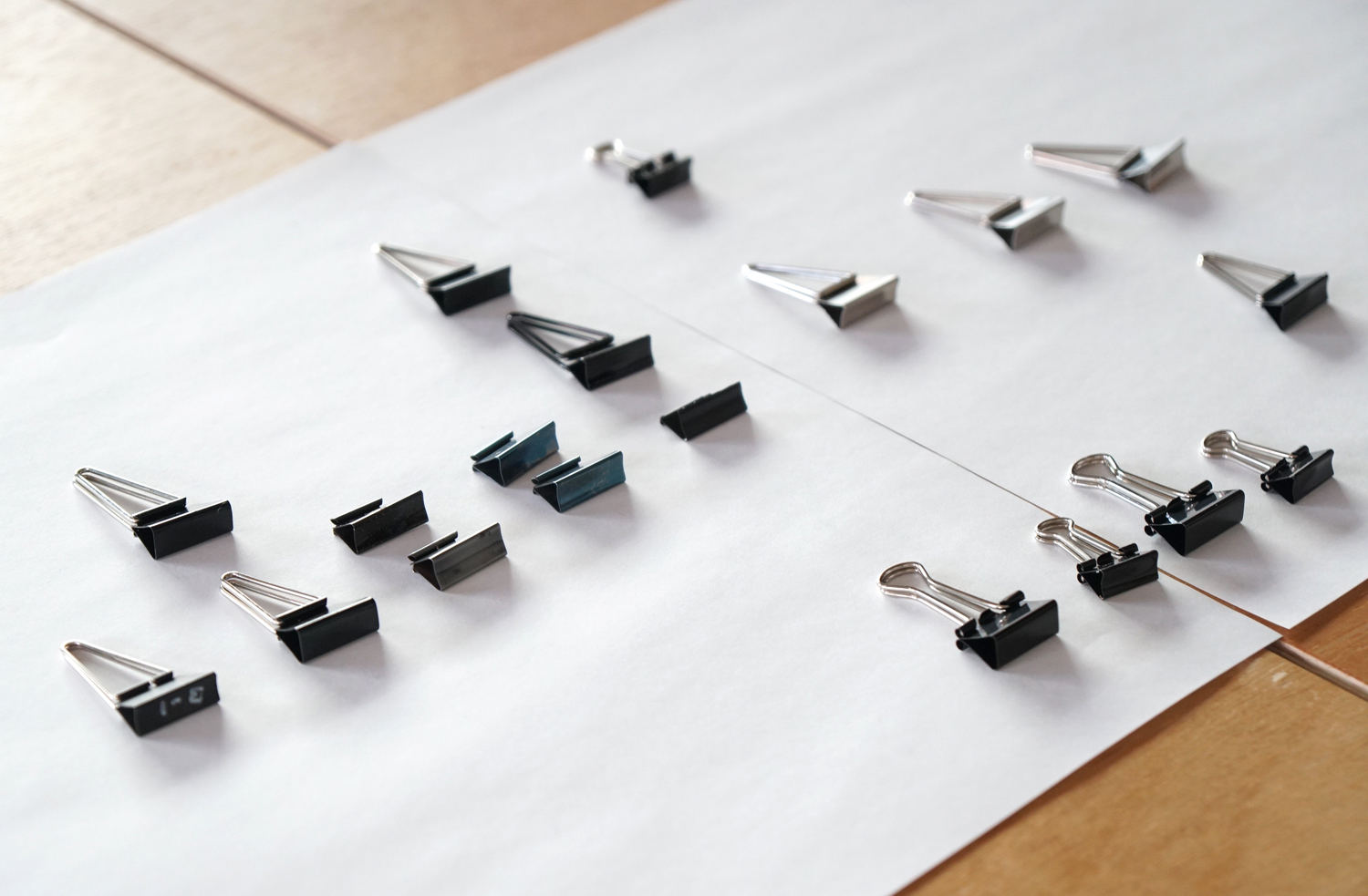
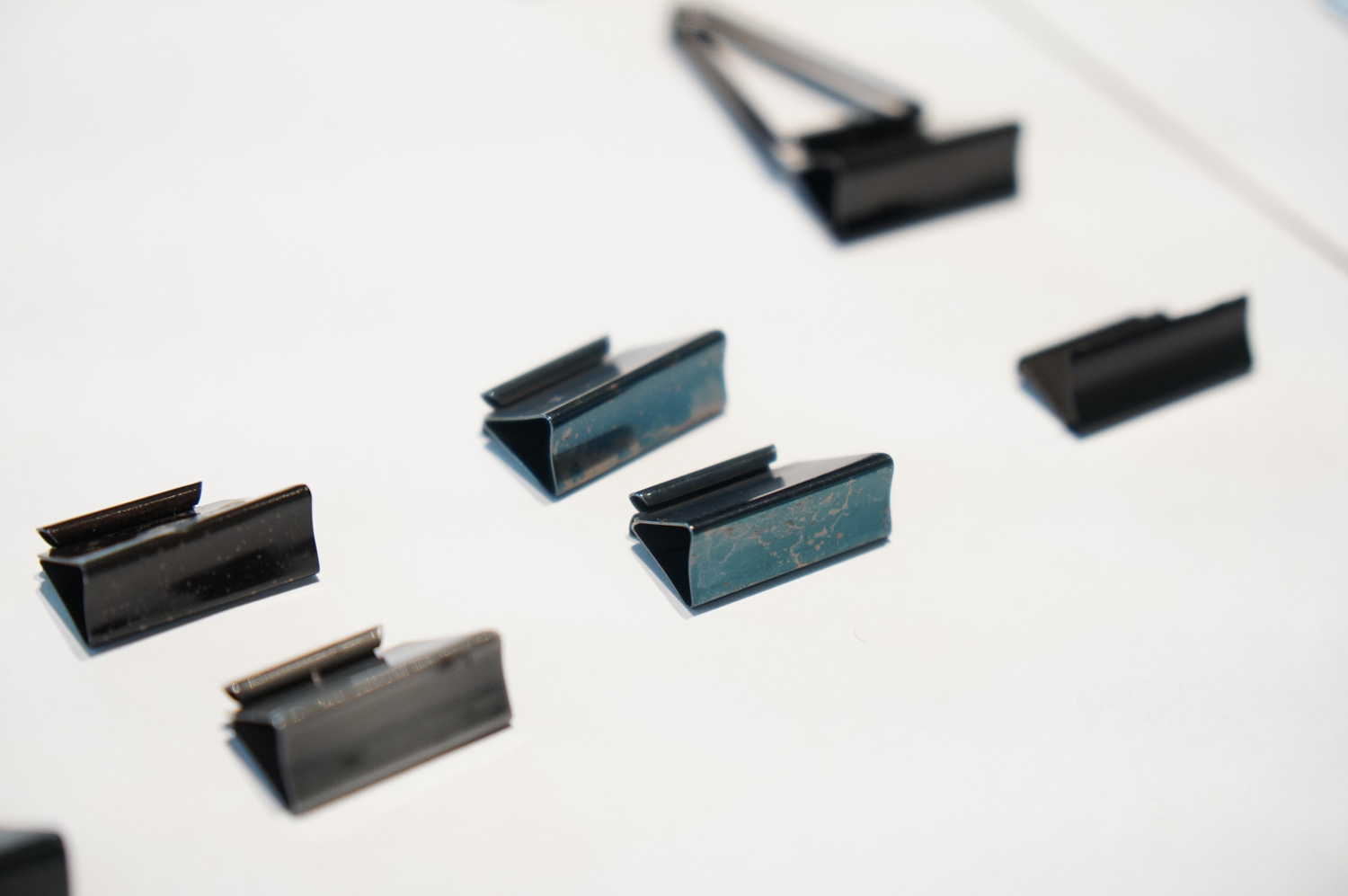
Smart Double Clip samples.
(Left) From left to right, the various shapes, structures, and materials they were experimenting with.
(Right) Samples of the spring steel that underwent surface treatment. There were various problems, with some of them being uneven or damaged.
Aya, however, was not planning to give up. “When I talked with the factory, they said that they thought it would be possible to solve the problems if the material that was being used was changed from SK (carbon tool steel) to stainless steel. At the end of 2022, we managed to put the Smart Double Clip into the shape we wanted,” explains Aya with a line of samples that have been made up to that time in front of her. You can really see how we tried different things over the nearly four years since the project started in 2019—slightly changing shapes and processing methods.
“Just look at all these; it's truly amazing how the product turned out,” said Akihiro as he looked over them. “At first, I thought the Smart Double Clip could be made into a product in no time. But I soon became aware that making something into a product is not a simple task. More than anything, I was amazed at Aya and the KOKUYO team's persistence. When the final product sample was sent to me, the quality of the material it was made of was high and very refined, so I was very happy.”
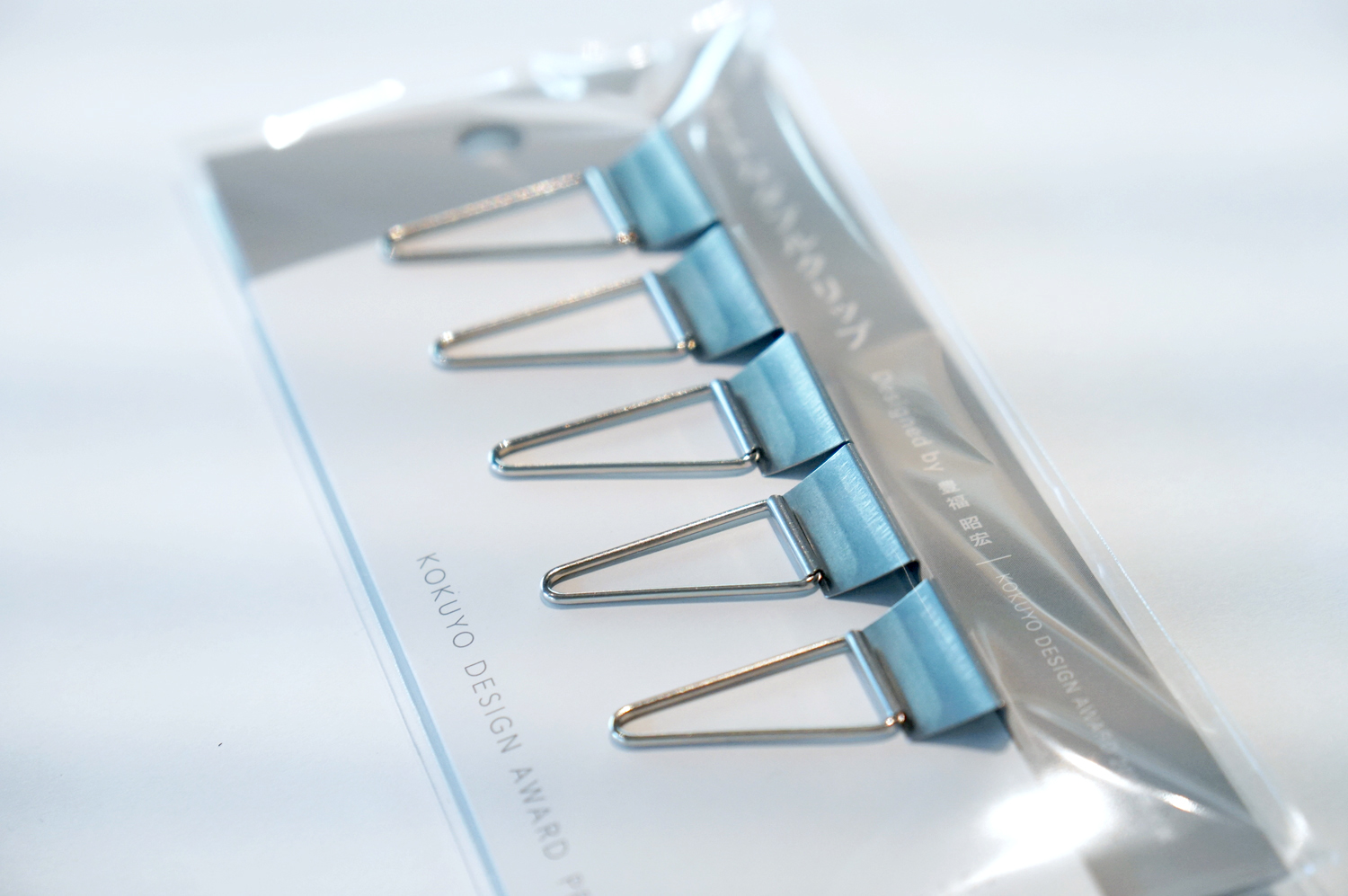
Smart Double Clips, now finished products after many trials and tribulations. The package also emphasizes the shape of the clip that Akihiro and Aya were originally particular about.
Keep at It and Never Give Up
Just as Akihiro did not give up entering the KOKUYO DESIGN AWARD and won the award after entering for the sixth time, Aya also did not want to give up on putting his product on the market. “It was my second year at the company, and I was happy to be entrusted with a new product,” says Aya. “Trying to put the products of the KOKUYO DESIGN AWARD on the market is filled with different processes and people's ideals compared to product development in business. That's why we wanted to make it. No matter what kind of challenge we faced, we couldn't just give up.”
Aya always reports the progress of the project to her superiors, and the project might have come to a halt if she said, “There is nothing more we can do.” “Through this project, I learned how difficult it is to manufacture things. However, when I kept at it and believed in what I was doing, the factory did not give up and proposed solutions to the challenges we were facing, and my superiors kept an eye on me, encouraging me to 'give it a try.' I'm glad we can bring products like Akihiro's that embody people's ideals to the market.”
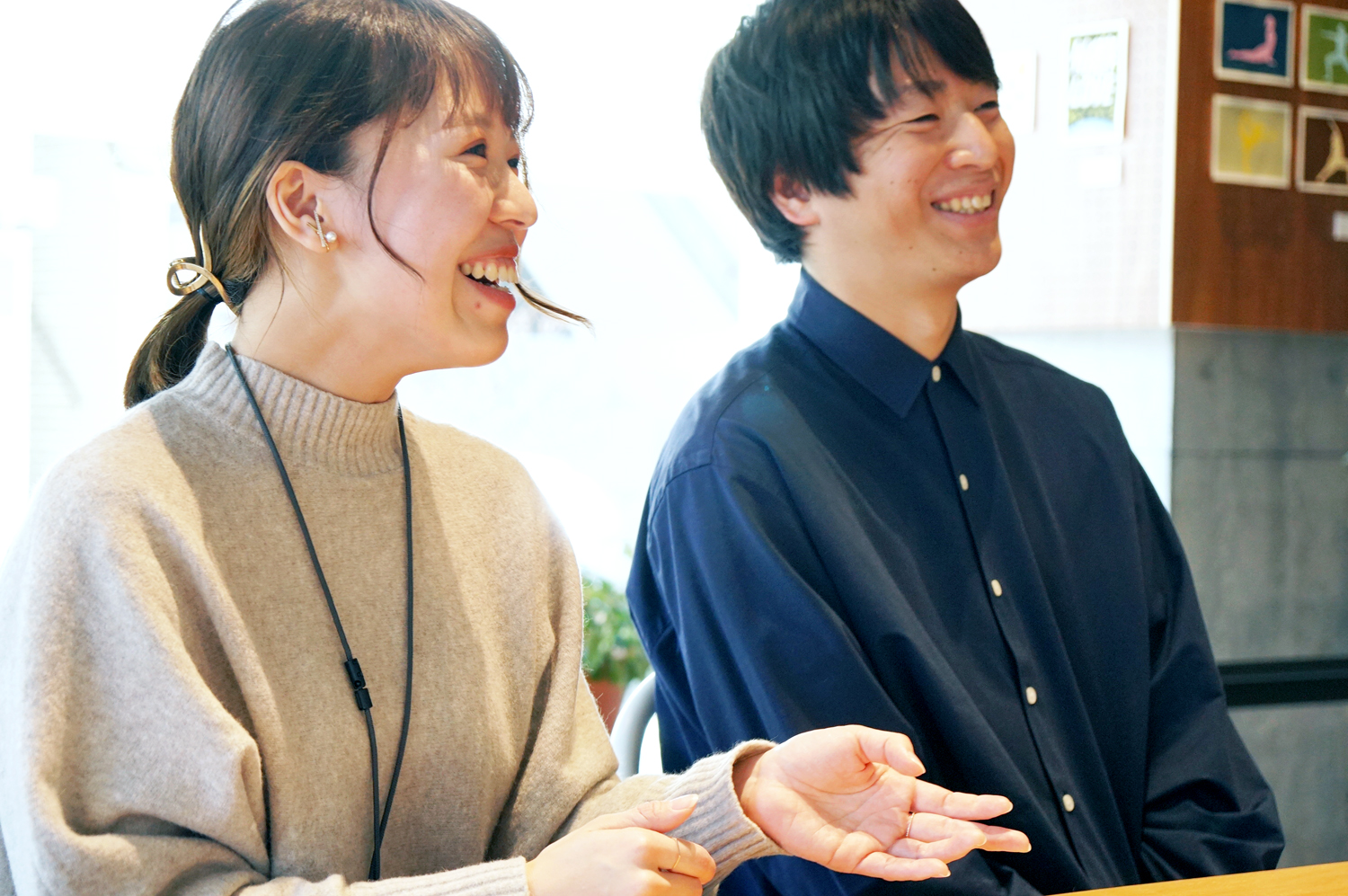
Aya Homma (left) and Akihiro Toyofuku (right) fondly look back at the hardships they experienced at the time.
Akihiro also said, “When I entered the competition, I was still making things by myself, but now I work with many people who are helping with manufacturing, which feels a little strange but makes me happy. We have been waiting for this product to be put on the market, so I am really looking forward to everyone's response.” Finally, he wanted to share some words with those who are thinking of entering the KOKUYO DESIGN AWARD. “Now that my product is on the market, I think it was worth entering the competition so many times. Each time I entered, I felt that I improved the way I proposed my product, the way I presented information about it, and the way I presented it in general, so it is important to never give up and keep at it. You should just enjoy the process of entering the KOKUYO DESIGN AWARD.”
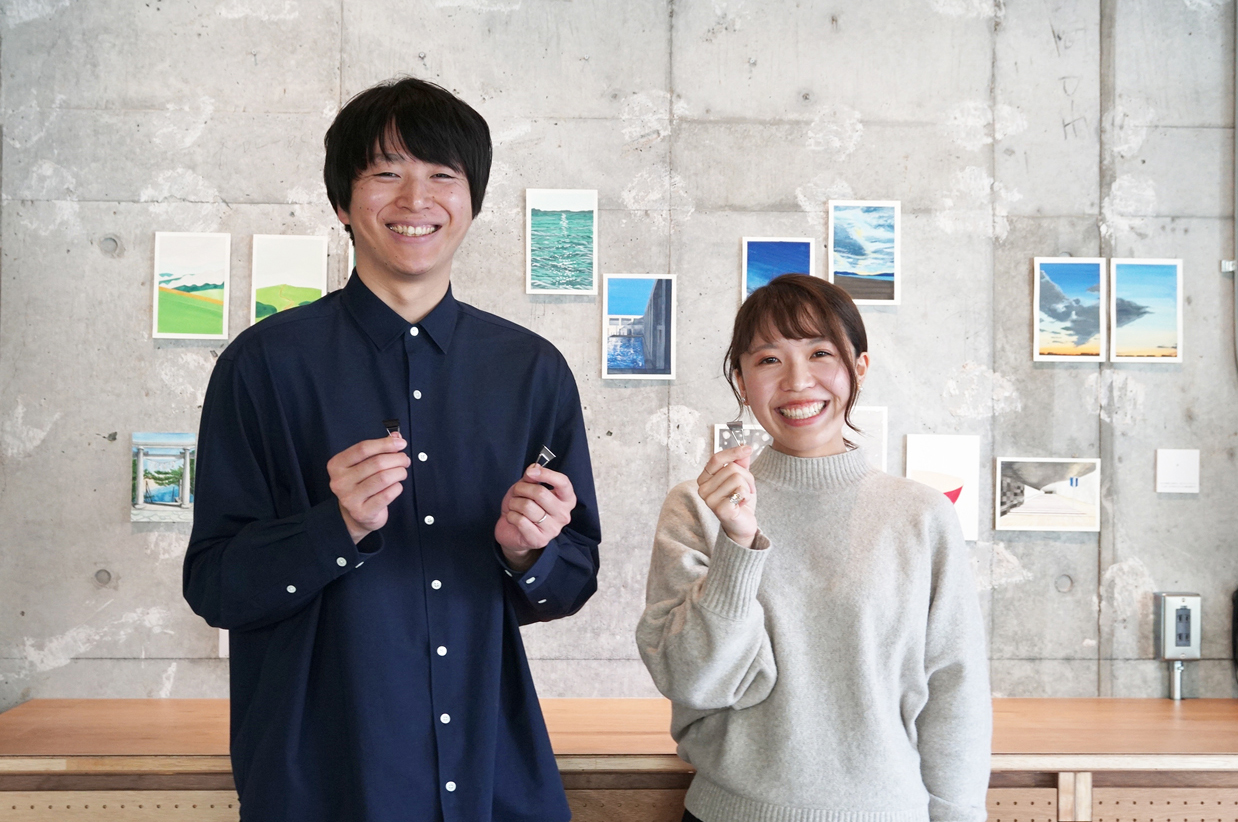
Toyofuku (left) and Aya Homma (right) holding Smart Double Clips. They both strongly believe that one should never give up.




















